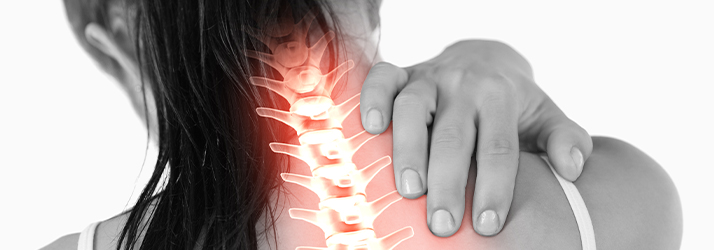KST And The Occipital Drop (OD) in Burbank CA

Practitioners of Koren Specific Technique (KST) in Burbank CA locate and correct areas of stress, imbalance, distortion, toxicity, subluxation, stagnation, disharmony, interference, etc. often missed by other healthcare practitioners.
KST practitioners do this by employing a protocol that is used to access information from the body: challenge, check and correct. Let’s explain:
- Challenge – test (i.e., gently stress) your body for imbalance disharmony, stagnation, toxicity, etc. and then
- Check – how the body responds by using a biofeedback mechanism. The answer will be either yes (there is stress) or no (there is no stress). If the answer is “yes” then we go to step three –
- Correct – release the stress using a variety of gentle methods.
Using the above, a KST practitioner will (first) challenge or test your body and then (secondly) check to see how your body reacts to the challenge. If the challenge revealed stress, the practitioner will then (thirdly) correct or release it. The procedure used to check how your body reacts (step 2) is a biofeedback stress test called the “occipital drop” or OD.
What is the occipital drop in Burbank CA
It’s called the occipital drop (OD) because we use your occiput, a skull bone located at the back of your head. When your body is challenged (stressed), your occiput appears to drop a little on one side. KST practitioners look for, or feel, for the presence or absence of the OD when they put their hands on the back of your head.
Is this the only way to locate stress?
The occipital drop (OD) is one of many ways in which your body responds to stress. We call these little stress detectors “binary biofeedback mechanisms.” They are like little lie detectors. Some other binary biofeedback mechanisms are:
- Heart rate
- Muscle strength
- Breathing
- Eye pupil size
- Sweating
- Brain activity
- Blood pressure
- Posture
- Voice
- Muscle tension
- Many, many others
Why are they called “binary biofeedback” mechanisms?
- Binary – they can tell us yes (stress) or no (no stress)
- Biofeedback – the information comes from your body
- Mechanism – physical stress response; you have many of them working all the time
KST uses your body’s binary biofeedback mechanisms to obtain information. KST practitioners take advantage of this biofeedback phenomenon to locate areas of physical, physiological and emotional (mind/body) stress, interference, subluxation, blockage, energy imbalance, distortion and body malfunction (among other things).
Commonly used in the healing arts
Binary biofeedback mechanisms are increasingly used by practitioners of many different professions. The most well-known is used by practitioners of Applied Kinesiology or AK, developed by George Goodheart, DC.
AK practitioners get information from the body using changes in muscle strength. AK is currently used all over the world by chiropractors, dentists, naturopaths, nutritionists, psychologists, medical doctors and other professionals.
Another biofeedback mechanism is the leg check. The patient/subject lies down and the relative length of their legs appears to change when stressed.
Another binary biofeedback mechanism is the apparent change in the rhythmical movement of the cranial bones in response to stress. CranioSacral practitioners use this type of biofeedback.
Advantages of the OD
The OD is often favored because:
- It can be performed without causing the patient to have muscle fatigue, which may occur using AK.
- It can be used to test the patient as they assume different postures. The leg check is limited to one posture.
- The OD can be used on oneself for self-care.
- The practitioner can use their OD non-locally, to obtain information about people at a distance.
Mentally locating the OD
Let’s say a person’s vertebra is out of place. If a KST practitioner slightly moves the vertebra more out of place and OD appears (because that increased stress), the practitioner knows the vertebra is out of position in that direction.
However, just thinking about the patient’s body part being out of place will also cause an OD to appear. Non-physical communication may at first seem odd but it’s really quite common.
Think of opening your car door; you can physically unlock it with a key or you can send an energy signal using your key fob to unlock the door. TV remote controls, garage door openers and many other objects work in this manner. Similarly, the body reacts to both though “energy” and physical energy.
KST practitioners can use physical or mental methods. The non-physical challenging is much faster and often gives more information. Why not ask your KST practitioner which method he/she prefers?
Can anyone do this?
Anyone can learn how to use the OD. Some practitioners teach their patients/clients and children to do it. Some people get it immediately, some need to practice. Some people have more sensitivity to their internal stress detectors (biofeedback) than others.
In time people develop their own OD style based on how their nervous system is uniquely wired. Patients have even commented to their KST practitioner that the person demonstrating KST on YouTube or the KST website “does it differently.” Using the OD is a little like playing a musical instrument; after mastering the basics, people may improvise.
How is this used?
The OD is used to locate areas of deep physical, chemical, physiological and emotional (mind/body) stress causing the most harm. Practitioners then use various techniques to release the stress.
The goal is to help release that which prevents you from functioning at your best- physically and mentally, so you’ll enjoy greater health for your entire life.
Monday
10:30am - 6:00pm
Tuesday
10:30am - 6:00pm
Wednesday
10:30am - 6:00pm
Thursday
10:30am - 6:00pm
Friday
10:30am - 6:00pm
Saturday
10:30am - 4:00pm
Sunday
Closed
First Chiropractic
101 W Alameda Ave
Burbank, CA 91502
